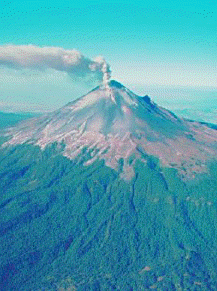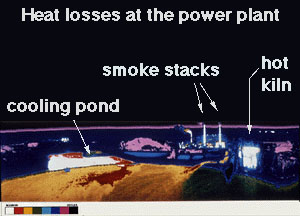Exploratour - Comparing the Surfaces of Earth and Mars
Click on image for full size
Image from the U.S. Geological Survey
Leave the tour and learn more about volcanoes .
Volcanoes have a great impact on the surface of the Earth. The most majestic of the volcanoes are composite volcanoes, also known as strato-volcanoes. Unlike shield volcanoes, which are flat and broad, composite volcanoes are tall and symmetrically shaped. They have steep sides, sometimes rising over 3000 m above their base. They are built of alternating layers of lava flows and clumpy rock or pyroclastic material.
Famous composite volcanoes include Mount Fuji in Japan, Mount Cotopaxi in Ecuador, Mount Rainier in Washington, Mt Pinatubo in the Philippines, and Mt. Etna in Italy.
Sheild volcanoes can grow to be very big, becoming tall and broad, with flat, rounded shapes. The Hawaiian volcanoes are good examples of shield volcanoes. They are built by countless lava flows, usually without ash releases. This makes shield volcanoes relatively safe to study.
Famous shield volcanoes include Mauna Kea and Kilauea (two of the Earth's most active volcanoes), and Olympus Mons of Mars.












